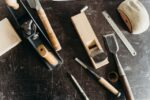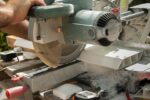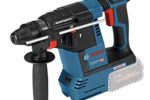How To Choose The Right Woodworking Machinery For Your Workshop

Ah, woodworking. A classic hobby cherished by generations of entrepreneurs, DIY enthusiasts, and craft fans alike! The gentle hum of the router and the deliciously satisfying shavings float to the ground with each carefully crafted cut. If you’re considering opening your own woodworking shop, you’ve come to the right place. Today, I’m here to help arm you with all the information you need on how to choose the right woodworking machinery for your workshop.
The right woodworking machinery can make all the difference between a successful woodworking venture and one that fails. You want to make sure you make the best investments with your money and get the most bang for your buck. If you’re just starting out, then you definitely want to take into consideration the amount of time, money and skill you have available.
First, you need to do your research. Start by studying woodworking magazines and websites to get a feel for the types of woodworking machinery available. Then, focus on the specific types of woodworking machinery you think you might need for your shop. Compare the specs and prices of the various models available, narrow down your choices and do more research on the models you like best.
Next, you’ll need to compare the costs of the machinery. Make sure to take into account the cost of shipment, installation, and any taxes or fees associated with the purchase. Don’t forget about upcoming maintenance and other supplies that you may need for your machine. Once you’ve done your financial homework, you’ll be that much closer to being able to choose the right machinery for your workshop.
Another important factor when choosing the right woodworking machinery is making sure the machinery will fit in the space you have available in your shop. Measure the size of the machinery you’re considering and make sure it will fit through your door and into the space you have. Take into consideration any other furniture or items that need to fit in the room as well and adjust your measurements as needed.
On top of making sure your woodworking machinery is safe, you also need to make sure that you and everyone else in your workshop are safe as well. Research standard safety guidelines, check to see if the machinery you’re considering has any unique safety considerations, and make sure you’re taking precautions to provide the highest level of safety in your workspace.
Another helpful tip is to make sure you know how to maintain your woodworking machinery. Once you’ve made a purchase, you want to make sure your equipment is well taken care of and that you’re following all the Instructions to keep it running in top-condition. Regular oiling, cleaning, and inspecting the machine can go a long way toward keeping it at its best.
One final piece of advice is to talk to other woodworkers. Get their advice and ask questions, especially if you’re just starting out. They may be able to point to Information or resources that you didn’t know existed, as well as let you know about any safety concerns you might not have thought of.
Finally,you need to consider the amount of money you want to invest in your woodworking machinery. It can be tempting to go for the most expensive option available, but you need to think about the amount of money you’ll save in the long run by choosing the right kind of machinery for your needs.
Finally, before you make your purchase, you need to do some soul searching. Do you have the skills and abilities required to operate the machinery? Depending on the type of woodworking you’re planning to do, you may need to get additional training or instruction. If so, invest in the appropriate classes or books.
So, there you have it. You now know the tips and tricks you need to choose the right woodworking machinery for your workshop. Do your research, compare costs, measure the space, consider safety, talk to other woodworkers and ensure you have the right skill set to operate the machinery before you make your purchase. With these simple tips, you’ll be sure to choose the perfect woodworking machinery for your workshop.
Research Your Options
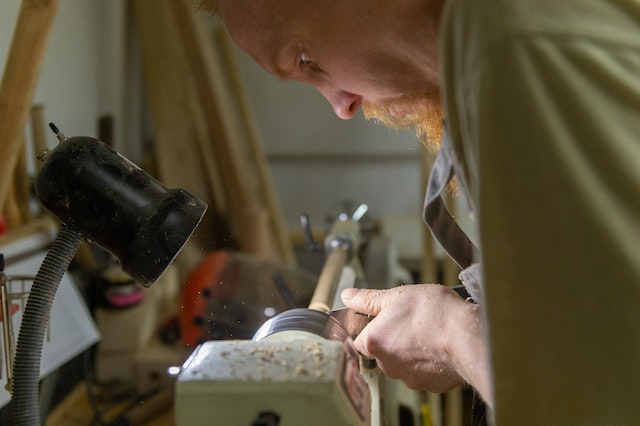
Oh man, you need to do some research if you’re gonna get your hands on the right woodworking machinery for your workshop – nobody wants a situation where you buy something that’s either not useful or unsuitable, crying out a sad “How did I ever get into this mess?” scream.
So, do a bit of digging about the different types of machinery available, the best models for a workshop and the kinds of jobs you can do. This can be done by reading reviews from a variety of sources – the internet, forums, fellow woodworkers and experienced professionals, etc. Get the lowdown on the features, price and safety of each type of woodworking machinery, and make sure you never pay too much.
Consider the various preferences of different woodworkers as well before you buy, ‘cause it’ll help you make an informed decision. I’ve seen people with various levels of expertise getting along just fine with even the most basic machines.
If you’d rather feel the materials first, try visiting your local stores and see some of the woodworking machinery up close. Good stores should have knowledgeable assistants who can provide you with lots of helpful information.
Get your hands on some catalogs that exhibits a wide range of materials you need to get the job done. Moving from section to section, checking each feature carefully will also help you find the right machine for you.
Another great way to make an informed decision is to take a look at various reviews taken directly from customer feedbacks. You’ll get a great sense of what people think of different models and assesses whether they are worth the money or not.
At the end of the day, you should be able to narrow down your choices so that you feel confident in your decision. Don’t forget to research the latest trends to determine which woodworking machinery is currently favorite and pay attention to any new models coming onto the market so you’re up-to-date with the latest technology. That’s doing the research!
Compare Costs
Alright, let’s talk about what’s probably the most important aspect for most of us when it comes to choosing woodworking machinery for your workshop: cost.
I’m sure that for the majority of us, we all want to get the best woodworking machinery for the least amount of money possible. Unfortunately, we don’t have unlimited funds to splurge on the latest and greatest tools.
That said, shopping around is important when it comes to selecting the right woodwork machinery for your workshop. That’s why you need to compare the costs of different machines that meet your criteria.
You should also consider any potential extra costs associated with a machine such as blade sharpening, replacement parts or maintenance and repairs. You’ll want to make sure you’re factoring these into the overall cost of the machine.
Be sure to check the small print when making your purchase to make sure you’re getting a good deal. If you can get the same or equivalent quality at a cheaper price, that’s always a good thing.
You should also compare warranties that come with different machines. Ensure that you’re covered for any possible breakdowns or damage and make sure the warranty period is long enough to give you peace of mind.
A good idea is to create a spreadsheet with all the costs associated with each woodworking machine. That way you can easily compare and contrast the different machines, and make an informed decision.
When it comes to machinery for your workshop, always shop around and compare costs. That’s the best way to save some money and make sure you’re getting the best bang for your buck. You never want to rush into a purchase, as you could end up spending more money in the long run.
Measure Your Workshop
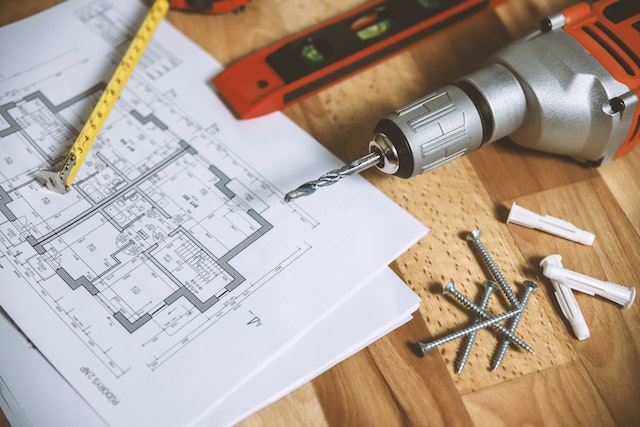
If you’re ready to embark on the journey of finding the perfect woodworking machinery for your workshop, the first step is to measure your workshop. Measuring your workshop should not be taken lightly, because who wants to show up with a machine that doesn’t fit into the workspace? That’s a complete waste of time and money!
Before making any decisions, be sure to measure the length, width, and height of the space. Measure the space twice—you know, just to be safe. You’ll want to be able to fit any woodworking machinery, all of the tools, and any additional items that you want in the workshop. So be sure to measure up!
Also, plan your electric and water lines in the workshop. You’ll want to ensure that you have enough electric outlets to power the woodworking machine and any other items, as well as enough water pressure (for any machinery that might require it).
Just because you measured the space once doesn’t mean you should stop there. Take some additional measurements of the open workspace, too. There needs to be enough room for you to maneuver around, so you’re able to work comfortably and move any large pieces of wood in and out. Unless, of course, you like to have your workshop crowded—in which case, be my guest!
Now that you know the room dimensions, you can start looking through the options available. With any luck, you’ll find one that fit the measurements of your workshop perfectly. As a result, you’ll save time, money, and energy in the long run!
And that’s all there is to it—it’s not much but following these steps will help you find the best woodworking machinery for your workshop. So get out your measuring tape, get to work, and you’ll be on your way to success in no time!
Consider Safety
Okay, so you’re shopping around for the right woodworking machinery to use in your workshop, and it’s time to consider safety. Now, unless you’re me (heck yeah!), safety really is important, no matter how funny it may seem.
First off, make sure the machine you’re purchasing is OSHA compliant. OSHA (The Occupational Safety and Health Administration) ensures that all woodworking machinery complies with their rules and recommendations. After that’s squared away, remember to read the manual for the machinery before you start using it, to make sure you’re familiar with the safety precautions it suggests.
You also need to think about guards and other protection devices recommended by the manufacturer. Make sure these are in place before you start operating the machine, as they can help protect you from moving components and other dangerous parts.
Ensure that the machine has a dead man switch and an emergency stop button. These are used to shut off the machine if an emergency situation arises. This will allow you to get out of the way of any danger quickly, without having to reach over and hit the power switch.
Finally, keep in mind that while you might want to be sure to wear safety clothing while using your machine, always make sure to take off any jewelry, watches, scarves, and ties that could get caught up in the machinery.
At the end of the day, don’t worry—following these steps will make sure your woodworking projects stay safe and enjoyable. Now get out there and start hammering away!
Regularly Maintain Your Machinery
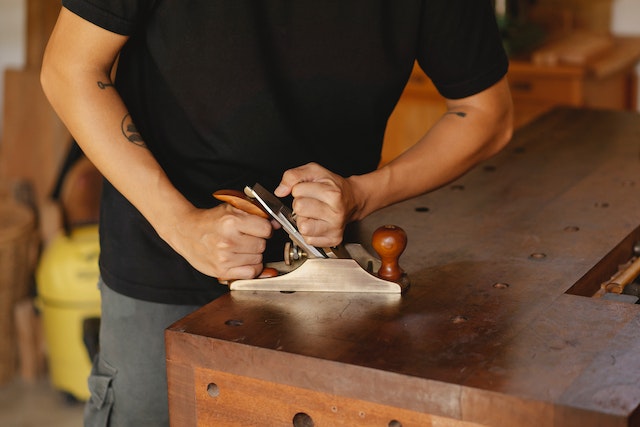
When it comes to maintaining the machinery you have invested in, its all about the unspoken rule: Do it regularly, fool!
A lot of pieces of machinery will come with instructions on how to care for them and how often they need service. Now, as a woodcarver, you don’t have to get too technical here; I’m talking oiling joints, tightening screws, and even lubricating the saw blades. Sure, it’s important for the long-term performance of your woodworking machinery. But, let’s be honest—doing it too often could get tedious and even expensive if there’s a lot of prep and tear-down involved.
It’s tempting to put off the maintenance of your tools until they start to malfunction. Don’t do it! Even if you oiled a saw blade on Monday and it’s not due for its next oiling until Thursday, it’s best to keep up with it. I mean, who knows how fast the blade is wearing down or how quickly the joints are drying out? The last thing you want is for your machinery to grind to a halt even though it’s due for service way ahead of schedule.
You can look into machine warranties, as well. Sure, it costs more upfront, but if something happens to your chain saw or radial arm saw and it’s covered by the warranty, it could save you from a pricey repair. That’s cash you can better invest in more woodworking supplies for your workshop.
Just remember, maintenance ain’t just for your car—it’s for your woodworking machines, too. If you keep up with it, you’ll have time to focus on the more important things in life—like crafting the perfect cheese platter. Word.
Enquire from Other Woodcarvers
When you’re about to invest in some serious woodworking machinery, there’s no substitute for advice and wisdom from someone who’s been there before. And who better to give it than your fellow wood carving friends? I know they usually don’t like to share their tried and true methods, so you’re just gonna have to work a little harder to get it out of them.
A great place to start gathering intel is by attending your local woodworking club meetings. Whether it’s a formal one or just an informal gathering of friends, you’ll pick up on key pieces of advice that might have taken you forever to figure out on your own. It can save you a lot of time and money in the long run, not to mention inevitable technological growing pains. Who else better to talk shop (and woods!) with?
You can also approach your more experienced wood carving friends one-on-one and ask more specific questions about the machinery they suggest. How do they feel about the setup process? How about their experience with the prior maintenance and repair? Has their machinery held up over an extended period of time, or did it need a lot of attention? How costly were those repairs? Which machinery did they end up choosing and why? These are all great questions to ask—and, who knows, maybe they’d be open to showing you their setup in person if you offered to drive!
Finally, take some time to watch wood carving veterans at work. Have them demonstrate all the tricks they’ve learned over time. Ask questions and take notes. See how they operate the machinery— their movements, their timing, and even their facial expressions. That last one is key: You don’t want to choose a tool they can’t handle or one that will make them and their workshop unhappy.
My old man always used to say, “Never trust a salesman and never start a wood-carving project without talking to someone who’s been there before.” And as usual, he was right. Take his advice and be sure to always reach out for help and advice before making any major decisions about your workshop. After all, your family, friends and fellow carvers are the only ones you can count on for real, honest advice.
Investment vs Savings
When choosing the right woodworking machinery for your workshop, it’s important to remember that making the right investment can offer long-term savings. It is never worth gambling on cheaper, inferior machinery just because it offers an initially lower price tag.
This decision carries the kind of importance that only Pops can accurately reflect: “You gotta go big, or go home”. The sort of woodworking machinery that is available shouldn’t cause you to hesitate, take the plunge and make the investment. The money you save in the long run will be worth it.
When it comes to shopping for woodworking machinery like lathes and saws, there is a delicate balance between cost and quality. A wonderful thing about investing wisely is you can choose a long-standing model or brand and spread the cost over many years. Plus, you can often pick up second-hand or refurbished machinery for a fraction of the cost of a new model.
Needless to say, it pays to shop around and compare prices. There are tons of great bargains to be had if you’re diligent and of course, don’t forget the wonderful world of the internet.
When it comes to the cost of running and maintaining the machinery, you’ll want to bear this in mind. Generally, you make your money back from the long-term savings, so the upfront cost is ultimately irrelevant. The point is, taking your time to research and compare prices and quality is a must, especially when you’re planning to have your machinery for a number of years.
Another great thing about choosing the right woodworking machinery is that you minimize disruption. When the machinery needs repair or parts replacing, you avoid downtime, saving you time and money in the process.
Admittedly, it can be quite a struggle deciding on the right machinery and making the right investment. The important thing to remember is that you don’t always have to go with the newest model. If you decide that the right choice is to go for the superior but more expensive model, be confident in your decision to make the jump. After all, that meaningful investment may just mean savings down the line.
Ensure You Have the Ability to Operate
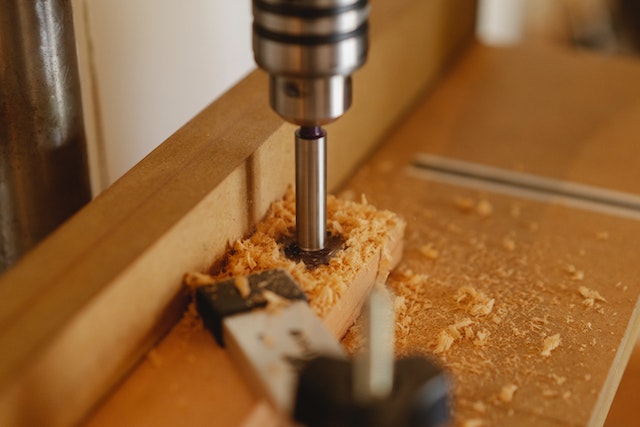
Ah, you’ve done your research, read all the guides, and now you’ve narrowed your options down to a few suitable pieces of woodworking machinery. But why should you squeeze the trigger and buy any of them? Well, there’s one last step you should take, it won’t cost you a penny and it’s called, “ensuring you have the ability to operate”!
Sure, you’ve read that these pieces of machinery come with easy and intuitive controls, but remember, an easy and intuitive operation to one person isn’t the same to everybody. You need to be sure that you can actually handle the operation, after all, you don’t want the piece of machinery to end up collecting dust, just like those boxes of marbles you bought from the toy store when you were just a kid!
The best way to gauge your ability to operate is to talk to someone who has experience with the machinery you have in mind, as well as the type of woodworking project you have in mind. That could be a friendly neighbor who has a workshop of their own or even a helpful woodworker down at your local store.
At the very least, you need to take the time to understand the terminology used in the instruction manual and all those safety protocols, especially if you want to stay safe and keep those legs I was so pleased with.
And if you think you need to brush up on your knowledge and skills, there’s no shame in investing in a good book or two or joining a woodworking forum and even taking a short course at your local college. Whatever it takes, it’ll be worth it when you make the right decision and run that equipment like a champ!
But don’t rush into buying anything without making sure that you are actually capable of operating it. That’s the most important step in choosing the right woodworking machinery for your workshop!
